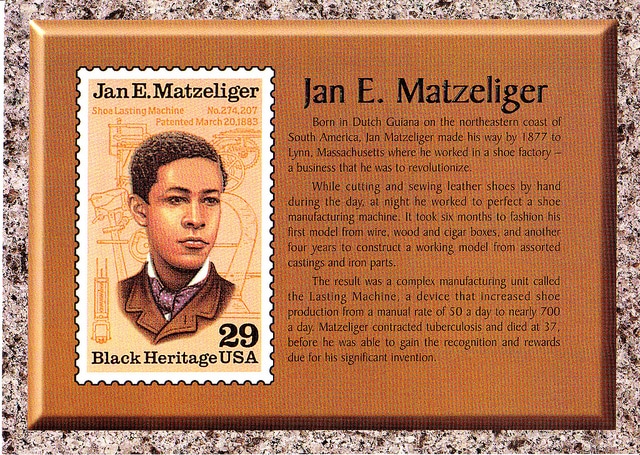Jan Ernst Matzeliger was born on Sept. 15, 1852, in Paramaribo, Suriname. His father was Dutch and his mother was a former enslaved woman from Suriname. Matzeliger began working in machine shops at 10. He died Aug. 24, 1889.
Matzeliger took night classes and studied English. He collected a personal library of scientific books he used to educate himself. Matzeliger was also a talented artist. He painted pictures, which he gave to his friends, and he taught classes in oil painting.
In 1880, Matzeliger was determined to improve shoe production. In the early part of the 19th century, shoe production was slow and only in the hands of cobblers. His process involved mechanical shaping of the shoe’s upper leather over a form shaped like a human foot, and attaching the shoe upper to the sole.
Around the 1880s, Matzeliger began putting together a crude prototype. He used whatever scraps he could find such as cigar boxes, pieces of wood, wire, nails and paper. He was ridiculed and underestimated by competitors.
On March 20, 1883, Matzeliger received patent number 274,207 for his machine. The mechanism worked by pulling the leather down around the heel, then setting and driving in the nails, and then the machine would discharge the completed shoe. It had the capacity to produce 700 pairs of shoes a day. That’s more than 10 times the amount produced by a cobbler.
In 1991, the United States government issued a “Black Heritage” postage stamp in Matzeliger’s honor.


